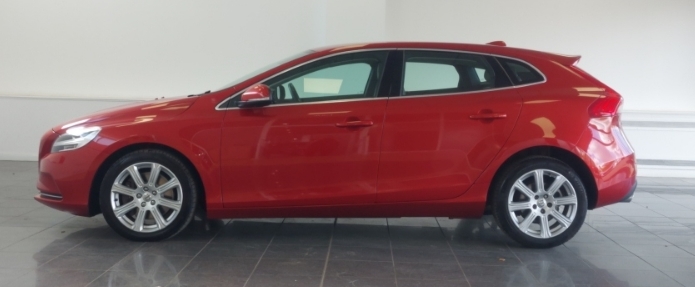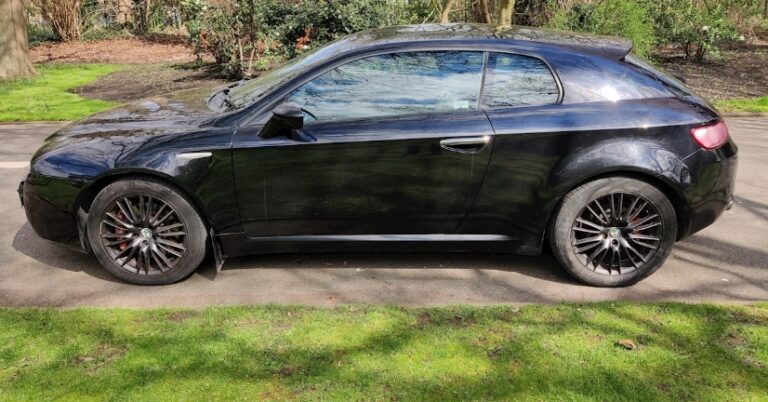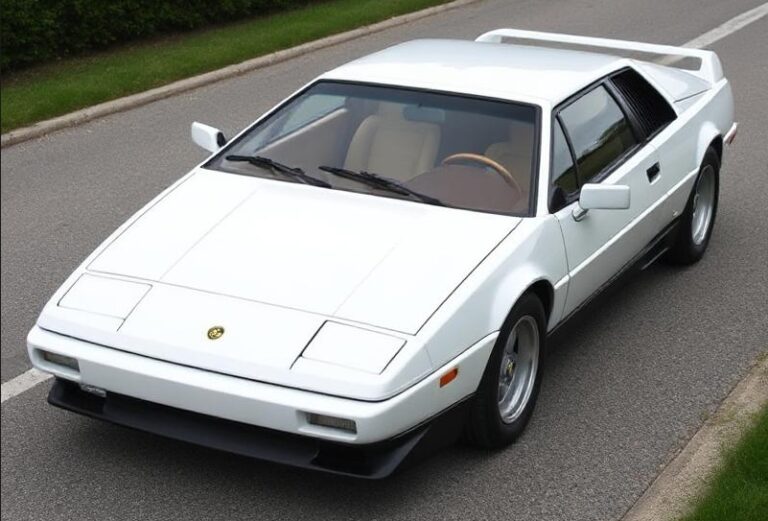The Evolution of the Volvo V40, V60, and V90
Volvo Cars has long been synonymous with safety, Scandinavian design, and innovative engineering. Over the decades, their model lineup has evolved significantly, with the V40, V60, and V90 serving as key pillars in their portfolio. This article provides a detailed chronological overview of these models, covering their production years, various models, and trim levels, illustrating how they have advanced in technology, design, and market positioning.
Volvo V40: The Compact Hatchback and Estate (1995–2019)
Introduction and Production Timeline
The Volvo V40 was introduced in 1995 as a compact hatchback primarily designed to replace the Volvo 440 and 460 models. It was produced until 2019, with a significant facelift and updates along the way.
First Generation (1995–2004)
- Launch and Design: The first-generation V40 debuted in 1995, featuring a rounded, modern design that aligned with Volvo’s safety-first philosophy.
- Engine Options: Initially offered with a range of petrol engines (1.6L, 1.8L, 2.0L) and diesel options (1.9L turbo-diesel).
- Trim Levels: Early trims included Base, L, GL, and GLT, with features such as air conditioning, power windows, and upgraded audio systems becoming available over time.
Second Generation (2004–2012)
- Design and Platform: The second generation was launched in 2004, built on the Volvo P1 platform shared with the S40 and V50 models. It adopted a more modern, aerodynamic design.
- Variants: The V40 was available as a hatchback and estate (V50), with the estate version offering increased cargo space.
- Engines: A broad range of petrol and diesel engines, including T4 (turbocharged 1.6L), T5 (turbocharged 2.5L), and D4/D5 diesel variants.
- Trim Levels: Included S, SE, SE Lux, and R-Design, with R-Design emphasizing sportier styling and suspension.
- Safety and Features: Incorporation of Volvo’s safety innovations like side-impact airbags, stability control, and optional leather interiors.
Third Generation (2012–2019)
- Rebranding as V40 Cross Country: In 2013, Volvo introduced a crossover-inspired variant, the V40 Cross Country, with increased ride height and rugged styling.
- Design: The third-gen V40 adopted a more refined, premium look, with high-quality interior materials and advanced infotainment systems.
- Engine Options: Included T2, T3, T4, T5 petrol engines, and D2, D3, D4 diesel variants, with some models featuring turbocharged and supercharged engines.
- Trim Levels: Offered Momentum, R-Design, and Inscription trims, with the latter emphasizing luxury features.
- Safety and Technology: Equipped with City Safety collision avoidance, adaptive cruise control, and Volvo’s Pilot Assist semi-autonomous driving system.
Discontinuation
The V40 was discontinued in 2019, marking Volvo’s shift towards SUVs and crossovers, and the model was replaced by the Volvo V40 Recharge, an all-electric version.
Volvo V60: The Mid-Size Station Wagon (2010–Present)
Introduction and Production Timeline
The Volvo V60 was introduced in 2010 as a mid-size station wagon, serving as a more dynamic and sporty alternative to the V70 and later as a smaller alternative to the V90.
First Generation (2010–2018)
- Development: Based on the second-generation S60 platform, the V60 was designed to blend practicality with sporty appeal.
- Design: Characterized by sleek lines, a spacious interior, and a versatile cargo area.
- Engine Options: Launched with T5 (turbocharged 2.0L), T6 (supercharged and turbocharged 3.0L), and diesel variants like D3, D4, D6.
- Trim Levels: Included Base, Kinetic, Momentum, R-Design, and Inscription.
- Features: Focused on safety and comfort, with options like leather upholstery, premium audio, and advanced driver assistance systems like lane keep assist and blind-spot monitoring.
Facelift and Updates (2016)
- Design Refresh: The 2016 facelift introduced subtle exterior updates, including new headlights, grille, and bumpers.
- Technology: Upgraded infotainment systems with larger screens, Apple CarPlay, Android Auto, and additional safety features.
- Powertrain Enhancements: Introduction of more efficient engines and mild-hybrid options.
Second Generation (2018–Present)
- Platform and Design: The second-generation V60 shares its architecture with the SPA (Scalable Product Architecture) platform, offering improved handling and safety.
- Powertrains: Expanded to include plug-in hybrid versions (T6 Twin Engine, T8 Twin Engine PHEV), diesel, and mild-hybrid petrol variants.
- Trim Levels: Continued with Momentum, R-Design, and Inscription trims, emphasizing sporty, luxury, and comfort features.
- Technology and Safety: Incorporates Pilot Assist, City Safety, Cross Traffic Alert, and a semi-autonomous driving suite. The interior features a large portrait-oriented touchscreen infotainment system.
Performance Variants
The V60 Polestar Engineered was introduced as a high-performance hybrid variant, combining Volvo’s T8 hybrid powertrain with sport-tuned suspension and chassis.
Volvo V90: The Full-Size Luxury Wagon (2016–Present)
Introduction and Production Timeline
The V90 was launched in 2016 as Volvo’s flagship station wagon, representing the pinnacle of luxury, technology, and safety in Volvo’s lineup.
First Generation (2016–Present)
- Design and Platform: Built on the SPA platform, the V90 offers a sleek, elegant design with a focus on premium materials and spaciousness.
- Engine Options: Available with T5 and T6 petrol engines, D4 and D5 diesel variants, and T8 Twin Engine PHEV.
- Trim Levels: Offered Momentum, R-Design, and Inscription trims, each emphasizing different aspects of luxury and sportiness.
- Features: Equipped with advanced safety systems, a digital instrument cluster, a high-end audio system, and a large Sensus infotainment touchscreen.
- Interior: Focused on Scandinavian minimalism with high-quality materials, optional semi-aniline leather, and wood accents.
Performance and Variants
- Polestar Engineered: The V90 Polestar Engineered variant was introduced as a high-performance hybrid model with sport-tuned chassis, increased power, and exclusive styling cues.
- Electrification: The T8 Twin Engine plug-in hybrid provides significant electric-only range, emphasizing Volvo’s commitment to electrification.
Facelift and Updates (2020)
- The V90 received a minor facelift with updated front and rear styling, new wheel designs, and improved infotainment features.
- The infotainment system was upgraded to a Google-based Android Automotive OS in newer models, offering better connectivity and integration.
Summary of Key Model Years, Variants, and Trim Levels
| Model | Years of Production | Notable Variants & Trims | Key Features & Updates |
|---|---|---|---|
| V40 | 1995–2019 | Base, L, GL, GLT, Momentum, R-Design, Inscription, Cross Country | Safety innovations, multiple engine options, facelift in 2013, discontinuation in 2019 |
| V60 | 2010–Present | Kinetic, Momentum, R-Design, Inscription, Polestar Engineered | Facelift in 2016, hybrid variants, advanced driver assistance, SPA platform |
| V90 | 2016–Present | Momentum, R-Design, Inscription, Polestar Engineered | Luxury features, electrification, Google-based infotainment, minor facelift in 2020 |
.
We LOVE cars & cruising around, but sometimes day trips to explore new cities are required (with family or friends) for a spice of variety in your life!
So GO explore!
Cruises & Day/Night City Tours to: Baltimore, Boston, Chicago, Marina Del Ray, New York, Niagara, Philadelphia, San Diego, San Francisco, Toronto, Washington DC, etc.:

.
Conclusion
Throughout its evolution, Volvo’s V40, V60, and V90 models have exemplified the brand’s unwavering dedication to safety, Scandinavian design, and technological innovation. The V40, as a compact hatchback and estate, laid the foundation with practical design and safety features, evolving through generations before being phased out in favor of SUVs and electrified models. The V60 and V90, on the other hand, have continually pushed the boundaries of luxury, performance, and safety in their respective segments, embracing electrification and advanced driver-assistance systems.
As Volvo continues to advance its lineup, these models stand as testament to the brand’s commitment to progressive design, sustainability, and driver-centric innovation. Their evolution reflects broader trends in automotive engineering and consumer preferences, marking Volvo’s transition towards a more electrified, safe, and connected future.







